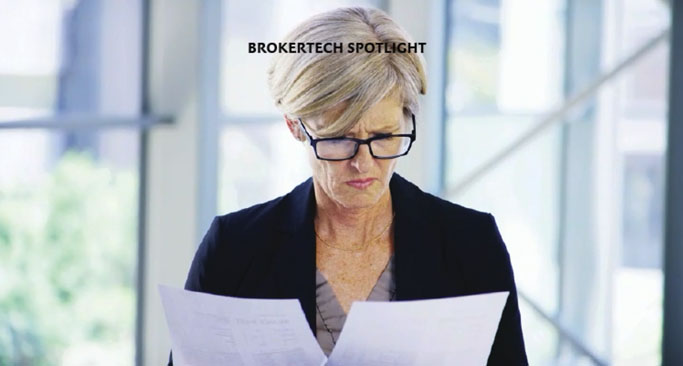By focusing on the most time-consuming
process—policy review—Qumis delivers accurate,
swift results that empower users with relevant data
By Lori Widmer
Dan Schuleman wants you to have your weekends back. Schuleman, cofounder and CEO of Qumis, remembers what the workflow was like at the start of his law career. He was working in insurance as coverage counsel representing carriers on complex claims. “I was so deep in the weeds on the forms and all the laws,” he says.
That’s when he learned what it was like sifting through policy language. What struck him, he says, was “how manual it is to read through a policy and go line by line” to find and then interpret policy information. “I was really shocked to see a lot of folks just print out the policies and highlight them and sticky-note them up.”
He’s learned that much of this manual work is also being done on weekends, particularly Sundays. “We come to find out that a lot of these folks actually do this stuff on the weekends because they don’t have enough time during the week.”
Bringing AI to analysis
That experience started him thinking about how to apply technology to improve that process. Schuleman teamed with his cofounder and tech developer, Shiv Sinha, to build what he says is “the product that I wish existed.” With Sinha’s talent and expertise, Schuleman was able to successfully develop and bring to the market Qumis, an AI-driven insurance policy and form analysis tool. The tool was launched in early 2024.
Qumis uses AI to interpret and deliver actionable information on policy language. Users can ask questions and have Qumis deliver coverage-related answers, pose hypothetical situations, and get responses that cite source material for easy fact-checking and review. The result is more accurate results, fewer instances of human error, greater consistency throughout the organization and in a legal setting, and better compliance.
“If the industry could afford to have lawyers do everything, they probably would, but that’s just not possible.”
—Dan Schuleman
Co-founder and CEO
Qumis

Brokers, he says, can use Qumis to compare policies, improving their ability to advise clients. Claims teams can analyze coverage for complex claims and find key information quickly.
Also, what Schuleman says Qumis brings that other solutions cannot is the “lawyer gold standard” of policy and risk analysis. “If the industry could afford to have lawyers do everything, they probably would, but that’s just not possible,” he says. “But we can make that possible with AI, which can provide kind of a similar level of insight if we interview and train with that level of expertise and knowledge into the platform.”
While nothing is 100-percent accurate, Schuleman adds, Qumis can bring clarity and better search results to users while slashing the time needed to dig through a policy and make sure that the language has not been amended and how it is to be interpreted. What used to take days can now be accomplished anywhere from 30 minutes to an hour or two.
Having that kind of time return-ed is golden, he says. What are you doing with that time? Schuleman says, “Chances are, you’re actually thinking more strategically and using your actual knowledge to make better decisions” thanks to having the time to view the larger picture with all the facts gathered.
Not only is the process of coverage review faster, so too is the implementation of Qumis. Schuleman says users create a login, go online, then drag and drop documents into the system. “I personally hate terrible enterprise software that has a whole bunch of buttons, and no one knows how to use it, and then you just kind of get your little rhythm,” he says. “We want to make it just really, really easy and intuitive.”
What users say
For Garrett Droege, senior vice president, director of innovation, and digital risk practice leader for IMA Financial Group, instilling and maintaining the expectation of excellence within the minds of the broker’s customers is essential. Discovering Qumis before they launched was a true find, he says. IMA regularly reviews AI tools to assist with organizational workflows. That’s when Qumis hit their radar.
“We actually learned about Qumis while they were still in stealth mode and referred them to BrokerTech Ventures (BTV) for consideration for the insurtech accelerator program. They were accepted, and our relationship deepened from there.”
The acceptance itself is something Droege says tells plenty about the company. Startups that are selected for BTV undergo extensive vetting by multiple brokers and carriers. “It’s a great barometer of whether a startup has something special,” he adds.
IMA ran a proof-of-concept with Qumis with 25 users. That group grew to 45 users once word got out, he says. “At the conclusion of the proof-of-concept, the comments from the team were nothing short of effusive. ‘Game changer.’ ‘Materially impactful.’ ‘Accurate and efficient.’ ‘Don’t take this away from me.’ All real comments,” he says.

“The agents, brokers, and carriers that succeed in the next few years will be the ones adopting AI at scale and helping their employees and clients manage ever-complex workflows and desks.”
—Garrett Droege
Senior Vice President, Director of Innovation, and Digital Risk Practice Leader
IMA Financial Group
It was obvious to the IMA team that Qumis was the tool to help with some of their workflow processes. So far, the result has been beyond expectations. “One of the most important aspects of our role as brokers is to ensure the coverage we negotiate for our clients is best-in-class and in line with our gold standards,” says Droege.
“Qumis helps quickly compare coverage language and allows our associates to ask important questions about the policy language,” he explains. “Additionally, Qumis allows us to quickly compare quotes, policies and other documents, like contracts, against one another for compliance purposes.
“This process is time-consuming and is often outsourced work for many brokers,” Droege adds. “Qumis allows us to provide a tool to our associates that puts them back in control.”
Qumis also allowed IMA’s employees to get up and running quickly. “The onboarding process is quick and painless, and they allow our associates to connect with them to discuss one-off use cases and workflow development,” Droege says. “The system is a very user-friendly design, with most associates noting that it was ‘easy to use and understand.’”
For Qumis to be the most impactful within an organization, Droege has some advice for fellow brokers and insurers. “You need to start evaluating areas within your operations where AI can start to assist your team,” he explains.
“We don’t believe that AI will replace humans. However, AI will augment them,” Droege adds. “The agents, brokers, and carriers that succeed in the next few years will be the ones adopting AI at scale and helping their employees and clients manage ever-complex workflows and desks.”
Schuleman echoes Droege’s sentiments. “Our intent is not to replace human expertise. We make experts better at what they do and faster at what they do.”
He reiterates that AI solutions, including Qumis, can never deliver 100-percent accuracy. But it can bring clarity to the process and arm users with data and, most important, time to do what they do best.
For more information:
Qumis
qumis.ai
The author
Lori Widmer is a Philadelphia-based writer and editor who specializes in insurance and risk management. BrokerTech Spotlight articles look at insurtech offerings from startups that have partnered with BrokerTech Ventures (BTV), a convening platform for brokers, carriers and wholesalers, and tech firms, and includes insight from other BTV member owners.






